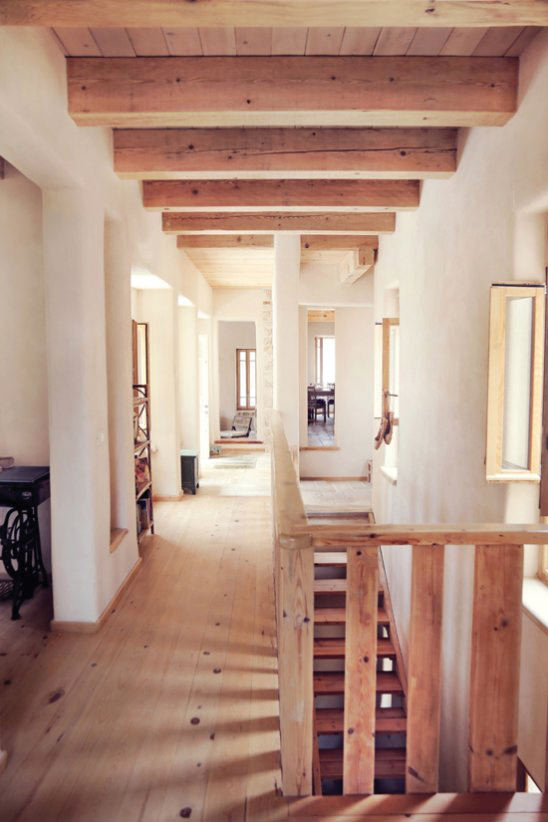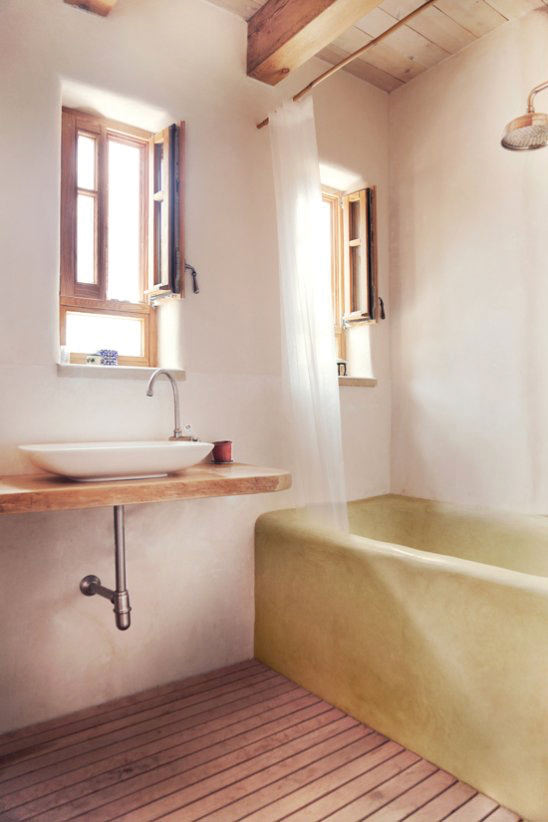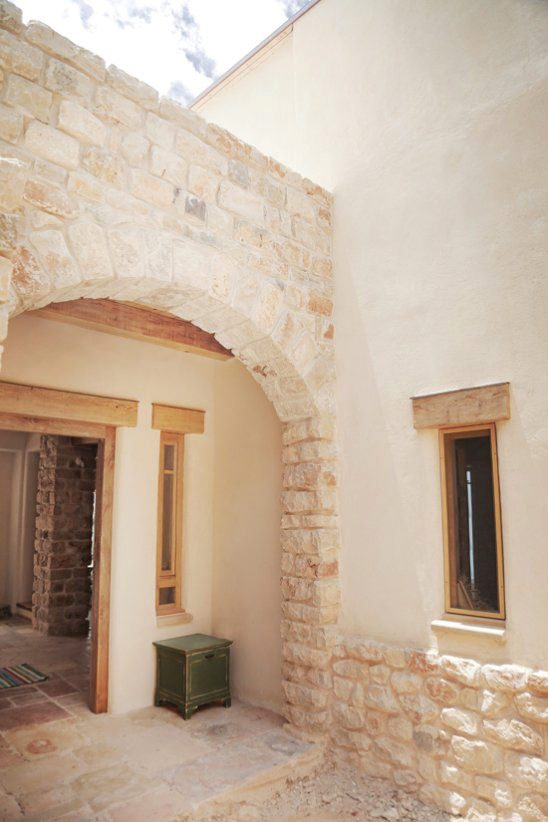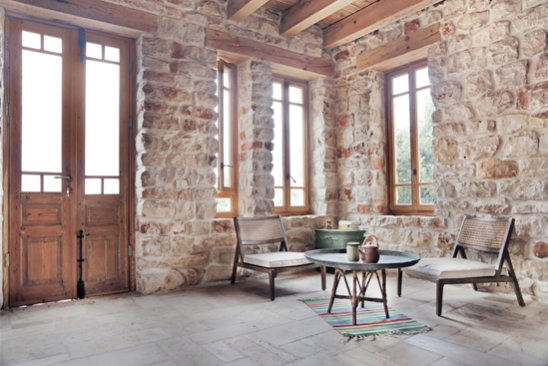Cannabis is one of the world’s most versatile plants. Varieties bred with high amounts of THC, CBD, or other cannabinoids are well established in their medicinal value, while hemp, which has little THC, is useful as a textile, fuel, protein source, and more.
So utile is the cannabis plant, that the Tav Group, an architecture company based in Israel, built an “ecological house” almost entirely from hemp.

Located in Ein Hod, an artists’ colony in northern Israel, the house is terraced on a southward slope, designed to pick up the sea breeze in the summer and sunlight in the winter, in order to foster a mild climate throughout the year. The walls of the 250-square-meter villa’s upper floor are made of hemp and hydraulic lime, and supported by wooden framing. The house also includes walls of local stone that were collected from excavation materials at the site. The architects avoided cement almost entirely, except for the home’s mandatory “safety room” (bomb shelter) and foundations. The interior plaster is earth-based, while the external plaster is made from lime. Wooden beams support the ceilings.

The house also includes an “eco bathroom,” which features a composting toilet and a recycling water system that collects rainwater to use for showering, washing dishes, and watering the garden. The house is also surrounded by olive trees and other local plants.

According to Maoz Alon, a founding partner of the Tav Group, which launched in 1987, the idea behind the “ecological house” was to foster “a real dialogue with the environment; to build and to live as naturally as a bird feathering her nest.”

Meant to be an “archetype of sustainability,” the house is the first in Israel that’s built from hempcrete, according to the Tav Group. It’s not the only one in the world, however, as hempcrete is becoming an increasingly popular and more sustainable alternative to concrete.

Other buildings made from hemp include a house in Belgium designed by Ghent studio Martens Van Caimere Architecten, and renovated French villa, designed by Swiss architecture office FRAR.






